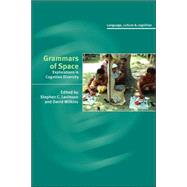
Note: Supplemental materials are not guaranteed with Rental or Used book purchases.
Purchase Benefits
What is included with this book?
| List of figures | ix | ||||
| List of tables | xi | ||||
| List of contributors | xiv | ||||
| Preface | xv | ||||
|
1 | (23) | |||
|
|||||
|
1 | (1) | |||
|
2 | (4) | |||
|
6 | (2) | |||
|
8 | (7) | |||
|
15 | (7) | |||
|
22 | (2) | |||
|
24 | (39) | |||
|
|||||
|
24 | (1) | |||
|
25 | (4) | |||
|
29 | (10) | |||
|
39 | (13) | |||
|
52 | (8) | |||
|
60 | (3) | |||
|
63 | (52) | |||
|
|||||
|
63 | (1) | |||
|
63 | (1) | |||
|
64 | (8) | |||
|
72 | (11) | |||
|
83 | (20) | |||
|
103 | (9) | |||
|
112 | (3) | |||
|
115 | (42) | |||
|
|||||
|
115 | (2) | |||
|
117 | (6) | |||
|
123 | (12) | |||
|
135 | (13) | |||
|
148 | (6) | |||
|
154 | (3) | |||
|
157 | (49) | |||
|
|||||
|
157 | (1) | |||
|
158 | (6) | |||
|
164 | (19) | |||
|
183 | (8) | |||
|
191 | (1) | |||
|
192 | (12) | |||
|
204 | (2) | |||
|
206 | (24) | |||
|
|||||
|
206 | (1) | |||
|
207 | (2) | |||
|
209 | (8) | |||
|
217 | (5) | |||
|
222 | (6) | |||
|
228 | (2) | |||
|
230 | (43) | |||
|
|||||
|
230 | (3) | |||
|
233 | (7) | |||
|
240 | (11) | |||
|
251 | (12) | |||
|
263 | (8) | |||
|
271 | (2) | |||
|
273 | (38) | |||
|
|||||
|
273 | (1) | |||
|
274 | (2) | |||
|
276 | (13) | |||
|
289 | (4) | |||
|
293 | (9) | |||
|
302 | (7) | |||
|
309 | (2) | |||
|
311 | (48) | |||
|
|||||
|
311 | (1) | |||
|
312 | (3) | |||
|
315 | (24) | |||
|
339 | (11) | |||
|
350 | (8) | |||
|
358 | (1) | |||
| 10 Elements of the grammar of space in Ewe | 359 | (41) | |||
|
|||||
|
359 | (1) | |||
|
360 | (10) | |||
|
370 | (12) | |||
|
382 | (5) | |||
|
387 | (11) | |||
|
398 | (2) | |||
| 11 Spatial language in Tamil | 400 | (37) | |||
|
|||||
|
400 | (1) | |||
|
401 | (3) | |||
|
404 | (11) | |||
|
415 | (10) | |||
|
425 | (9) | |||
|
434 | (3) | |||
| 12 A grammar of space in Japanese | 437 | (38) | |||
|
|||||
|
437 | (1) | |||
|
437 | (1) | |||
|
438 | (11) | |||
|
449 | (21) | |||
|
470 | (3) | |||
|
473 | (2) | |||
| 13 Some properties of spatial description in Dutch | 475 | (37) | |||
|
|||||
|
475 | (1) | |||
|
475 | (2) | |||
|
477 | (8) | |||
|
485 | (15) | |||
|
500 | (6) | |||
|
506 | (4) | |||
|
510 | (2) | |||
| 14 Patterns in the data: towards a semantic typology of spatial description | 512 | (41) | |||
|
|||||
|
512 | (2) | |||
|
514 | (13) | |||
|
527 | (14) | |||
|
541 | (9) | |||
|
550 | (3) | |||
| Appendices | 553 | (23) | |||
| References | 576 | (24) | |||
| Author index | 600 | (4) | |||
| Language/Language family index | 604 | (3) | |||
| Subject index | 607 |
The New copy of this book will include any supplemental materials advertised. Please check the title of the book to determine if it should include any access cards, study guides, lab manuals, CDs, etc.
The Used, Rental and eBook copies of this book are not guaranteed to include any supplemental materials. Typically, only the book itself is included. This is true even if the title states it includes any access cards, study guides, lab manuals, CDs, etc.